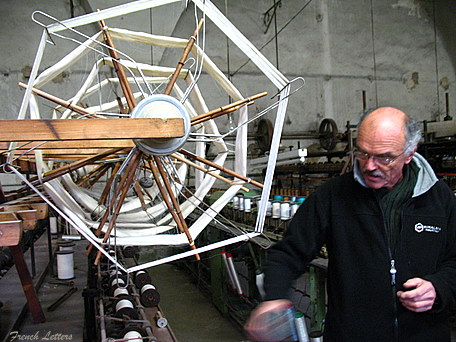
Today’s post is brought to you by Guest Blogger Shel, who is sharing his favorite Thanksgiving treat for the first time in print. As he tells the story…
Rich’s department store was a downtown Atlanta institution from Reconstruction until it closed in 1991, and during most of its history its top-floor Magnolia Room restaurant could be counted upon to provide excellent food and a spot for the weary shopper to rest both foot and wallet.
All-in-all, it was the downtown refuge for the fur and pearl set, its never-changing menu a reliable guide to light salads for the ladies and heartier fare for their escorts.
From early Hoover until mid-Eisenhower, one of the most popular selections on the numbered menu had been an open-faced sandwich on rye, made up of turkey, ham, bacon, cheese, lettuce and garnishes, the whole topped off with an appealing sauce.
Then, they changed the menu, and number eight became something else. Those customers for whom the sight of a green-uniformed Magnolia Room waitress brought forth a Pavlovian “Number eight and a cup of coffee, please,” were rewarded with something entirely different.
From the brouhaha that ensued, you’d have thought they’d changed the currency.
Within a month, each of the newly-printed, plastic-coated Magnolia Room menus bore a small, type-written sticker across the bottom of the sandwich page; it said, simply, “Yes, we have Old Number Eights.” Thus was a legend born.
In my parents’ house, “Old Number Eights” were synonymous with “Thanksgiving leftovers,” yet the phrase does no justice to the panoply of delights with which one was confronted should one have been so fortunate as to be invited to the parental manse the Friday after Thanksgiving. Rather than assemble the sandwiches, Mother put out the ingredients,buffet style, and each guest was encouraged to build his own, and build them we did.
To make the traditional Rich’s Old Number Eight, start with the Louis dressing:
1/2 cup Heinz Chili Sauce
1/2 cup home-made yellow mayonnaise
Combine in a serving bowl and blend with a fork until smooth. You may add a teaspoon or so of finely grated onion for a little extra zip, and you may use commercial mayonnaise instead of home-made if you add a little lemon juice to the mixture. Don’t use anything but genuine Heinz Chili Sauce (UPC code 131120); this is one place where kitchen improvisation will not be crowned with success.
One cup of the dressing should be enough for four sandwiches, but do not be suprised if your guests ask for more.
For each Old Number Eight, you will need
Two slices of American or Jewish rye bread
Several slices of tender turkey breast meat
Enough julienned ham strips to add a little flavor
Swiss cheese slices sufficient to cover most of both slices of bread
Two or three strips of crisp, cooked bacon
A hard-cooked egg, quartered
Two or three tomato wedges
A few olives
Some shredded (sliced, not torn) lettuce
The aforementioned Louis dressing
Toast the bread very lightly, really just enough to warm it, spread a little of the dressing on it and place both slices flat on a dinner plate. Cover with the turkey slices, the swiss cheese, the ham, and the bacon. Add a little dressing here and there if you think it needs it. Top with the lettuce and more dressing. Garnish with the tomato wedges, the quartered egg, and the olives.
The classic version is an open-face sandwich, and a knife and fork are required. If you’re laying this out as a buffet, add a selection of sliced breads, provide the eggs and tomatoes sliced as well as quartered, and double the amount of dressing available.
The method of preparing the turkey doesn’t seem to matter much, as long as you use a real turkey, not one of those slimy, chopped-and-formed “deli” horrors; you need the nice, even, almost flakey slices of breast meat that only come from a real bird perfectly cooked yesterday. My mother invariably oven-roasts her birds, my ex-wife boiled hers, and Abra and I prefer to smoke ours.
Of course, when you put out the ingredients buffet-style, and each person gets to build his own, the variations multiply; I don’t think any two people in our family end up with the same combination. I particularly like:
Untoasted rye bread (but since there’s no real rye bread in France, I’ll take it any way I can get it)
Swiss cheese
Sliced turkey
Bacon strips
Shredded lettuce
Louis dressing
In fact, I like this particular combination so much that I have been known to smoke a turkey breast for the express purpose of creating turkey leftovers from which to make it.
The ingredients and combinations may change, at least in my family, but an invitation to have “Old Number Eights” always gets my attention.































































